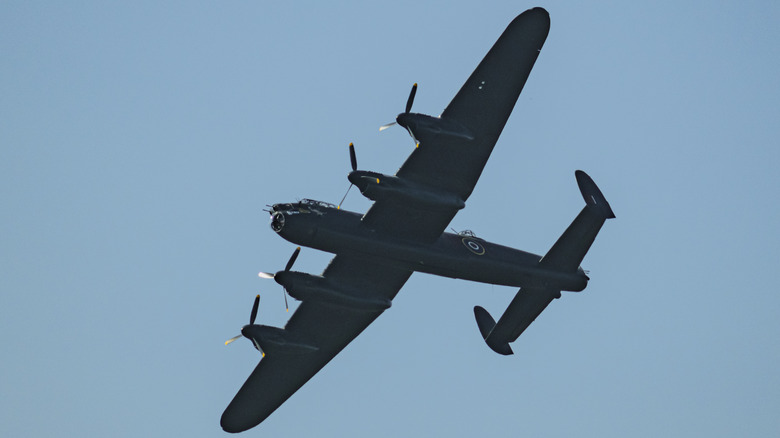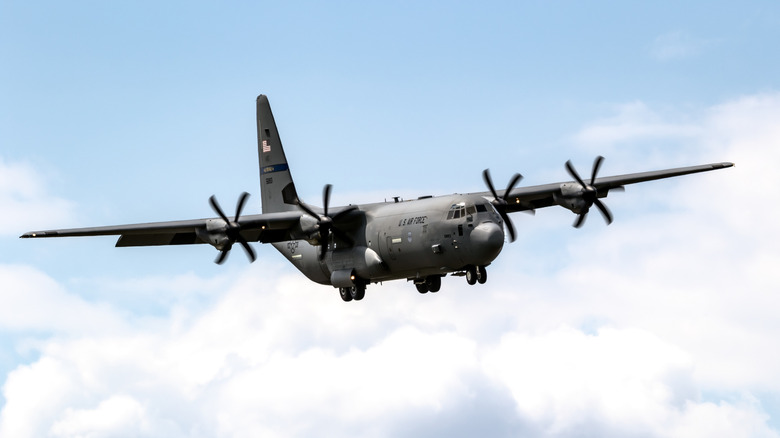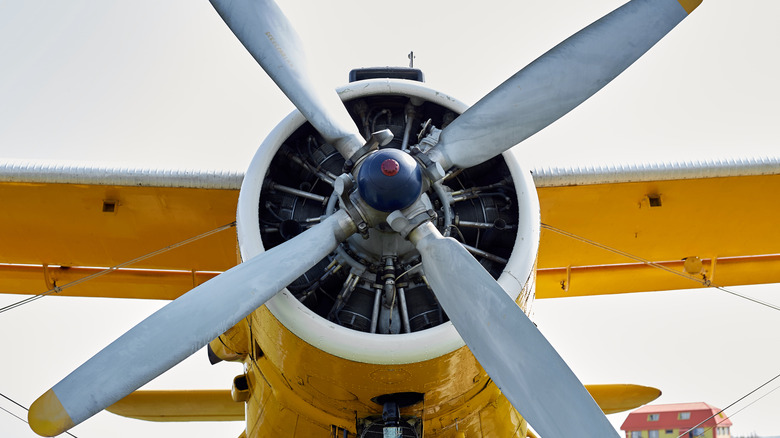Why More Propeller Blades Does Not Mean Higher Top Speeds In Airplanes
When one thinks of the average airplane, odds are that propellers are part of that mental image. They've been a crucial component of airplane construction from the moment air travel found its footing over a century ago. They're essential to generating the right amount of energy, known as thrust, to push the plane forward, allowing it to lift off the ground and soar through the clouds at incredible speeds. They have done and still do an excellent job, seeing as the United States military still uses several propeller aircraft. With that said, the technology isn't perfect, nor is it a means of infinite speed. That's to say, if one were to just keep adding propellers to a plane, it wouldn't mean infinitely higher top speeds.
As it turns out, there's a good reason why planes aren't typically equipped with tons of propellers in the hope of gaining more speed. In fact, an excess of propellers would actively work against this goal. The presence of propellers impacts thrust as well as drag, meaning that despite their function of providing speed, their weight and movement will inevitably slow the plane down. Therefore, if there were to be an overabundance of propellers on a plane, their potential speed-related positives would be nullified. That's why propeller aircraft strike just the right balance between thrust and drag to get the most out of the propellers they are equipped with.
For the sake of speed and weight efficiency, propellers are only used to a specific extent on aircraft. At least, the amount that planes can handle tends to deliver optimal performance.
How fast can the right number of propellers make a plane?
As mentioned, the key to getting the most out of airplane propellers is to strike the right balance between thrust and drag. This means knowing how many propellers are just the right amount, which can vary from aircraft to aircraft. Smaller models can work with one, while larger, oftentimes military-intended ones can bring that propeller count up to two or even four. One such example of the higher end comes in the form of the United States Air Force's C-130 Hercules, equipped with four, six-bladed propellers. Its latest form, the C-130J, boasts a top speed of 417 mph at an altitude of 22,000 feet.
As mentioned earlier, an abundance of propellers doesn't necessarily equate to increased speed. This is made clear by the Soviet Union's Tu-95/142, a plane that became a record-setter for the speeds it could reach with four propellers to its credit. The Cold War-era bomber endures as the fastest propeller-driven aircraft in existence, with an astounding top speed of 575 mph, leaving craft like the four-propeller-equipped C-130 in the dust. It may not be regarded as the peak of the Soviet Union's aeronautical design like the Sukhoi Su-27, but there's no denying its place in history books for its ability to push propeller technology to the next level.
Evidently, propellers are more than capable of generating plenty of speed, even though they do have their limits. Still, this fact, coupled with plenty of other negatives, prevents them from being the foremost form of thrust generation in the aviation world.
The negatives of propellers go beyond increased drag
As useful as propellers are in moderation, even when only the useful number is present on an aircraft, they can prove quite negative to the flight experience. Naturally, as giant blades rotating at the front of a plane or on its wings, propellers can get loud. Passengers and pilots alike can be irritated by the sound, or worse yet, suffer hearing damage. Those in the surrounding area also have to bear the brunt of propeller plane noise pollution. It's far from uncommon to hear such a plane before you see it flying overhead, which is a testament to the noise level propellers can generate.
While noise is an important consideration with propeller-equipped planes, it's only the tip of the iceberg in terms of negatives. Propeller planes are generally slower than their jet plane counterparts, meaning they can't reach as high altitudes as well, and they can't travel as far. Even the largest propeller planes pale in comparison to jets in terms of size and passenger capacity, which is why they're not commonly used for commercial travel. In military contexts, they could even be obstacles, such as during World War I when pilots had to avoid shooting their own propellers.
At the end of the day, propellers have their place in the aviation world, and they'll likely maintain it for decades to come. However, don't expect them to overtake jet engine technology anytime soon due to their major limitations, chiefly their inability to maintain speed increases with each additional propeller.


